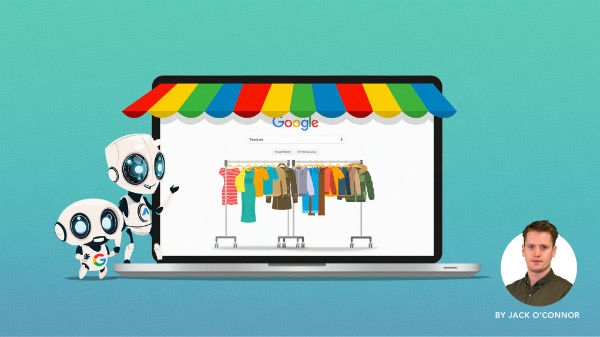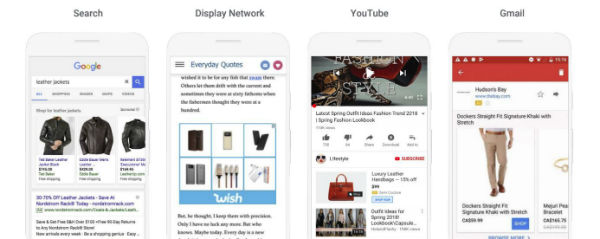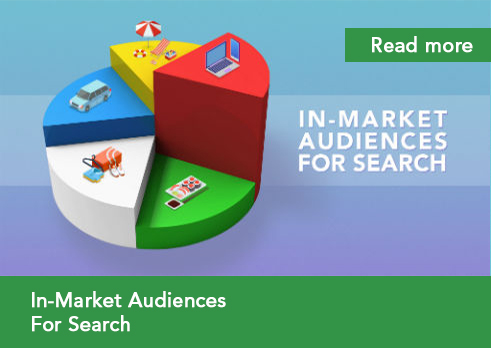By Jack O'Connor on 19 Jun 2018

If you've frequented The Wolfgang Blog over the past twelve months, you'll have seen most aspects of how we feel about Google's machine learning algorithms. While Smart Lists and Similar Audiences harness the awesome power of Google's AI-powered machine brain, my colleague Kenia demonstrated that certain elements of digital advertising just cannot be carried out effectively by a machine because there are lots of ads that need a human touch.
We're often invited to BETA test Google's latest innovations with our clients and we've just completed BETA testing Goal Optimised Shopping Campaigns (previously known as Universal Shopping Campaigns). Here's how they work and the results they delivered for Donegal-based fashion retailer McElhinneys.
Why Are Goal Optimised Shopping Campaigns Important?
In recent years, a shopper's path to purchase has become a lot more complex, largely thanks to mobile. Here are some interesting stats to mull over from our latest KPI study:
- 52% of all site traffic now comes from mobile
- Sites with more mobile and tablet traffic are growing revenue faster
- Customer journeys to purchase now take 12% longer
Individually, these are all very exciting metrics but together they lead to a digital marketing data nightmare.
All of these mobile sessions are generating individual, fragmented, intent-driven moments. Paths to purchase are becoming longer and less linear while shoppers tend to wander more from their original search and browse other options. This is one of the reasons I love Google Shopping as customers are given an opportunity to dive straight into product research in the SERP.
To create and optimise a shopping campaign, ad managers need to work on a multitude of tasks. This includes audience targeting, bid adjustments, remarketing and the shopping ads themselves, to name but a few. This has made the set up of Google Shopping Campaigns increasingly complex as well as very tedious to manage for us mere mortals.
That's why Google decided to unleash their machine learning algorithms on Google Shopping Campaigns and created Goal Optimised Shopping Campaigns.
What Are Goal Optimised Shopping Campaigns?
Google Shopping is a collection of ads which put products directly in front of potential customers. Previously, shopping ads could only appear at the top of the SERP (position zero). With Goal Optimised Shopping Campaigns, shopping ads can now appear across Search, Display, Gmail and YouTube. These new campaigns incorporate dynamic remarketing into our shopping campaigns.

Shopping campaigns are notoriously tedious to set up. To keep Goal Optimised Campaigns simple, at the flick of a switch, Google's machine learning brain can take 21 hours of human labour and convert them into ten minutes work. As these campaigns run on the display network, you will need to add some creative assets. Firstly, You will need to upload a suitable brand logo to your merchant centre account. To create the display ads themselves, you will need to upload a headline, a description and an image.
These assets will only show if a user hasn’t viewed a specific product on your site. If they have, they will be shown a dynamically created remarketing ad with the specific product they viewed. With your part of the deal complete, these AI-powered Shopping Campaigns kick in aiming to deliver performance and reach despite remaining simple for users to implement them.
The goal of these campaigns is simple; maximise the value of your conversions, but you can also indicate your target Return On Ad Spend (ROAS). A word of warning not to be too ambitious here or you'll end up stunting your reach. If you do decide to use Target ROAS you should use the minimal acceptable ROAS rather than your “ideal” ROAS.
How Are They Supposed To Work?
Before you trust Google's machine learning algorithms with your budget, you would probably like to know a little more about how it makes decisions. The secret to machine learning working really well is ensuring the process is fed extremely strong data. For this Google combines their own insights with your own retailer insights:
Google Insights:
- Search Queries
- Seasonality
- Device Information
- Location
- Placements
Retailer Insights
- Audience Lists
- Brand
- Sales
- Product Categories
- Price and Basket Size
To find the right shopper with the right ad, Google combines Shopping and Remarketing using just one feed, remarketing tag and campaign with bids and budgets being adjusted automatically too. This is where this method saves a bundle of time versus manually setting everything up.
And, Do They Work?
As a lifelong human, I found the McElhinneys BETA test results quite hard to take. I ran Goal Optimised Shopping Campaigns for three months and was absolutely floored by the results, especially when you consider just how 'fire and forget' this machine learning-led method is. Here are the results:
- Spend increased 60%
- Average Cost per Click dropped 66%
- Clicks increased 368%
- Conversions were up 392%
- Conversion Value rocketed up 392%
- Cost per Acquisition dropped 68%
- Conversion Rate was up 5%
Of course, I'm going to keep the best till very last. Goal Optimised Shopping Campaigns delivered an incredible 185% increase in ROAS.
Any Downsides?
Given how much we love data here, I would consider the lack of insight into the inner workings of these campaigns to be slightly frustrating. This means there's no easy way to dive into your Goal Optimised Shopping Campaign's performance to gain further customer insights. No search terms report, no insights into audiences and no insights into performance across different networks.
This is unlikely to impact many advertisers as the campaigns are completely self-managed and, from what I've seen so far, will perform excellently without human intervention.
Getting Started
If you're completely sold on Goal Optimised Shopping Campaigns, you can dive right in, connect your feed and have your entire inventory managed by Google's machine learning. If you're a little bit hesitant, while Google does recommend allowing their machine learning to manage your whole inventory, you can have it manage a smaller segment. For example, if you are a clothes retailer, you can apply Goal Optimised Shopping Campaigns to just men's shoes to see how they perform.
However, this isn’t the approach I would recommend as Google’s machine learning performs best with large sets of data. If we segment our products too much, the campaigns become ineffective. A better way to segment Goal Optimised shopping campaigns is by Target ROAS. For example, you may have a brand that delivers a high-profit margin. Therefore you can have this in a campaign with a target ROAS of X:1. If another brand delivers a smaller margin, you would have it in a different campaign with a higher target ROAS.
The Wolfgang Essential Takeaway
The power of Google's machine learning is both exciting and terrifying. While I know machines can't take over every element of digital marketing, Google has done a great job with Goal Optimised Shopping Campaigns within the Google Shopping world. If you are running Google Shopping campaigns and aren't seeing great results, this is a great step to take in order to give your performance a boost.
If you are seeing good results already, test out automation on a smaller segment of products to see if you can save some time and money.



.png)
.png)







_2025.png)

